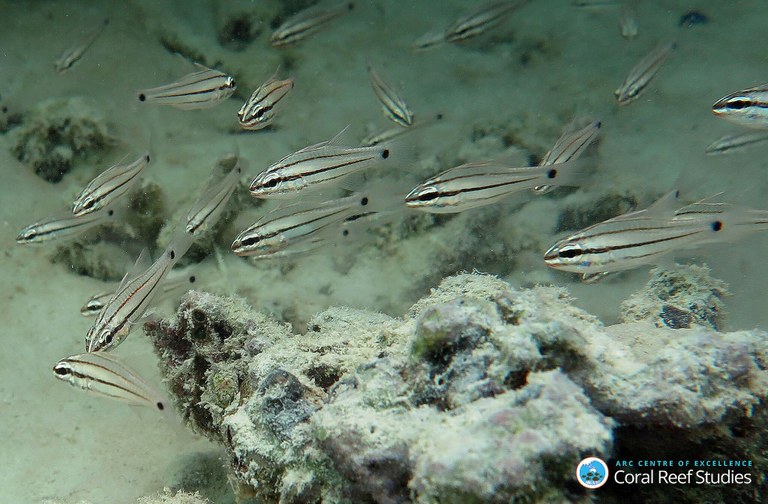Professor Mike Kingsford from the ARC Centre of Excellence for Coral Reef Studies at James Cook University collaborated with colleagues in Germany to find out how tiny Cardinal fish, the size of a fingernail, are able to swim towards home when there’s no sun or stars to guide them.
“This study is the first clear demonstration that reef fish larvae possess magnetic senses to orient them at night,” says Professor Kingsford.
“We collected Cardinal fish, less than one cm long, from One Tree Island on the Great Barrier Reef and tested their orientation in total darkness using the same magnetic field as the Reef,” Professor Kingsford says.
“Normally, fish orientated to the south east, but when we altered the magnetic field clockwise by 120 degrees, there was a significant change in the direction the fish swam. They all turned further west, thinking they were still on track to their destination.”
“Our results show that larvae can use their magnetic senses to point them in the right direction when it’s night time.
“We know from our previous research that once they start to get closer to their target, a ‘homing process’ begins, where the larvae rely on odor, sounds and landmarks to find and settle on a reef.”
Reef fish hatch from eggs into a larval form and disperse for days to months in the ocean before either returning home or finding another reef to settle. Once they get to a reef they generally stay there for a lifetime.
“The study tells us these baby fish actually have brains. They know where they are going and are strong swimmers. As a result they have some control over the reef they end up on. It’s not just about being led by the currents.”
Content provided by ARC Centre of Excellence in Coral Reef Studies and may be edited for style.










0 Comments